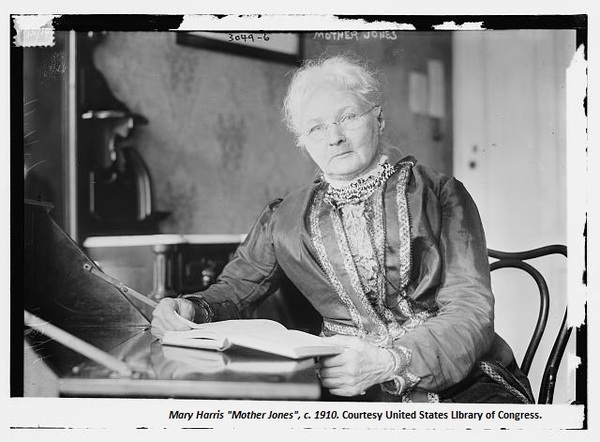Dublin Core
Title
Description
When she came to Utah to support striking coal miners, the Deseret News described her as a “vulgar, heartless, and vicious creature.” Learn about the “Miner’s Angel,” labor organizer “Mother” Jones.
In April 1904, Utah received a visit from one of the most notorious labor agitators in U.S. history. Mary Harris Jones – better known as “Mother” Jones – was an Irish immigrant who, after losing her husband and children to yellow fever, devoted the rest of her life to working people and their unions. She became particularly important to the miners in the American West, who were fueling eastern industrialization with the coal they unearthed.
Carbon County’s Utah Fuel Company employed the majority of Utah’s miners and produced thousands of tons of coal per year. Miners accused Utah Fuel of running a company town, cheating them at the scales, and violating Utah’s labor laws. In 1903, they walked off the job, demanding better wages, hours, and recognition of their union. The strike began at the Sunnyside mine, and then spread to Clear Creek, Winter Quarters, and Castle Gate.
Miners’ work was dangerous and they had legitimate grievances. But the company dismissed the strike as part of a wave of labor unrest sweeping Western states. They blamed Colorado agitators for encouraging Utah miners to strike out of sympathy. In this, they were right – Mother Jones did arrive from Colorado to rile up Utah miners.
But Jones’s critics tried to discredit her – a 67-year-old woman – by associating her with prostitution and vice. The Deseret News called her a “vulgar, heartless, vicious creature, with a fiery temper and a cold-blooded brutality rare even in the slums.” Still, the striking miners were happy to follow Jones and turned up the heat on the Utah Fuel Company.
Fearful that the strike would lead to violence, the state sent in the National Guard. They couldn't keep tensions from rising, so local officials staged mass arrests, which broke the back of the strike.
For her part, Mother Jones went on to co-found the Industrial Workers of the World and continued agitating for another twenty-five years.
Creator
Source
Image: "Pray for the dead and fight like hell for the living." Mary Harris "Mother" Jones was denounced on the floor of the U.S. Senate as the "grandmother of all agitators." Courtesy United States Library of Congress, digital ID ggbain.15973
______________
See Allan Kent Powell, The Next Time We Strike: Labor in Utah's Coal Fields, 1900-1933, Logan, UT: Utah State University Press, 1985; Deseret News, December 8, 1903, and April 30, 1904; Jeffrey Nichols, “Legendary Mother Jones Came to Help Striking Utah Coal Miners,” History Blazer, March 1995; Dale Fetherling, Mother Jones, The Miners’ Angel: A Portrait, Carbondale: Southern Illinois University, 1974; Allan Kent Powell, “The ‘Foreign Element’ and the 1903-4 Carbon County Coal Miners’ Strike,” Utah Historical Quarterly 43 (Spring 1975), pp 125-154; and Elliott J. Gorn, Mother Jones: The Most Dangerous Woman in America, New York: Hill and Wang, 2000.

